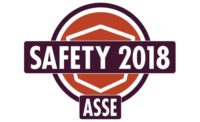From NSC Congress & Expo
Using positive reinforcement for success

Behavior that gets rewarded gets repeated is the cornerstone of positive reinforcement, said Ted Neubauer, safety director at Atema. He said employees are more likely to repeat safe behaviors when they are positively and regularly recognized for them.
He asked his audience Tuesday at the NSC Congress to rate themselves from a scale of one to 10 in terms of catching others in the act of doing something right.
Many said they would rate themselves five or below.
He offered tips for creating a positive environment in any workplace.
- Genuine interest
- See things from the other person’s point of view
- Team up
- The Golden Rule: Treat others how you would like to be treated.
- Recognize, praise and reward: Neubauer said don’t reward someone for something “they didn't do that they were not supposed to do in the first place,” such as not getting into an accident. Use appropriate rewards for appropriate behavior.
- Handle criticism effectively
- Create and maintain a positive mindset
- Train people to give positive feedback. Remind supervisors and employees to acknowledge positive behavior.
- Knowledge is power: Share with your employees what your goals are and how you plan on achieving them.
- Share the victory.
Neubauer said 80 percent of all communication is nonverbal so it’s important that you also pay attention to how you act and how you are perceived. “It’s the responsibility of the sender to make sure the communication is received and understood by the receiver.
Forms of communication
- Verbal: Face to face means something
- Nonverbal: If you're a leader, you need to wear your PPE, it sends a nonverbal message.
- Written: It means to something to someone and doesn’t take you very long to write a note or email.
- Visual: Pictures of people doing something right conveys a positive attitude.
Neubauer said to always accentuate the positive because most managers tend to look for negatives. But he cautioned that positive reinforcement is not always a good thing. For example, when an employee displays unsafe behavior, but meets a goal or quota, the manager may reward the employee by acknowledging increased performance.
Rules for positive contact
- Give praise immediate; don’t delay.
- Be very specific.
- Be consistent.
- Tell them how it make you or the company feel when they did the job correctly.
- Be silent: Allow the employee time to process information.
- Encourage them to do it again
- Shake hands
Looking for a reprint of this article?
From high-res PDFs to custom plaques, order your copy today!






